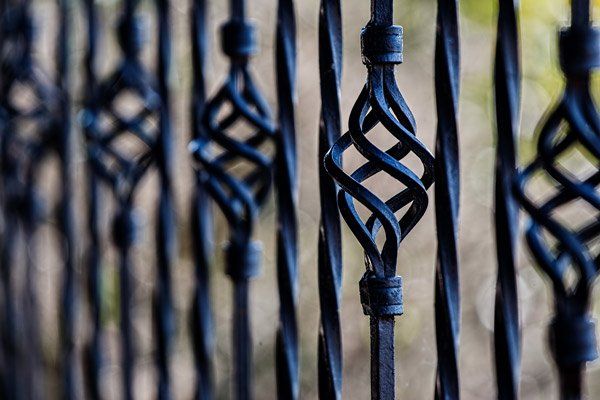A 5-Step Guide to Painting Your Wrought Iron Fence
- By Admin
- •
- 31 Jan, 2018
- •

A wrought iron fence is one of the best investments you can make for your home or business, so you should be prepared to guard it from loss due to rust. The best way to protect an iron fence is through painting, and as an added bonus, a new paint job will completely renew the look of your fence.
Below is a step-by-step guide to painting a wrought iron fence, including how to remove rusted and pitted paint.
1. Prepare for a Successful Paint Job
1. Prepare for a Successful Paint Job
The failure or success of a paint job depends upon moisture and temperature levels, so you should be certain the local weather conditions are suitable before you begin. For example, be sure humidity levels aren't excessively high and that temperatures aren't below 50 degrees or above 85 degrees Fahrenheit. In addition, it is best to paint on a cloudy day, if possible, and avoid direct sunlight for best results.
In addition, you should take steps to protect the area around the fence when painting. Use tape and newspaper to cover areas where overspray could be a problem. If necessary, edge around the fence with a grass trimmer to keep weeds and other plant growth from interfering with the painting process.
2. Remove Old Paint and Rust
Existing loose paint chips and rust can interfere with the new paint, so you need to take time to remove as much of these substances as possible. Begin by sanding the fence with a flap wheel attached to an electric drill. This will strip rust and a lot of the paint chips from the fence; however, be sure to wear eye protection when using the flap wheel to avoid getting fragments in your eye.
Once you have sanded the iron in all areas with the flap wheel, you can use a steel brush to remove bits of rust and paint from inside corners and other tight spaces. To make sure the new primer and paint will adhere, finish by using an emery cloth to roughen the painted areas that are still intact.
3. Clean the Iron in Preparation for Painting
After you have mechanically removed as much rust and paint as possible, you will need to clean the iron to create a receptive surface for the coat of primer. Ordinary grease-cutting liquid dish soap is an excellent cleaner for wrought iron and will remove most debris, as well as oil and grease. Make a rich, sudsy solution by combining liquid dish soap with warm water in a clean five-gallon bucket.
With a sponge, apply the dish soap solution to the iron fence to remove sanding dust, rust residue, and oil or grease that might be on the metal. Once you have washed the fence, use a garden hose to rinse off the dish soap, then towel dry it to remove as much moisture as possible. To be sure the primer will adhere, allow the iron to air dry completely before proceeding.
4. Apply a Coat (or Two) of Primer
Primer should not be considered optional when repainting an iron fence, as it forms a strong base coat necessary for the paint's adherence. Select an appropriate spray primer designed for use with metal surfaces and apply it to the fence as directed by the product manufacturer. You may need to use a second coat to ensure complete coverage of the fence.
5. Paint the Fence
Once the primer has dried completely, the fence is ready to be painted in a color of your choice. As with the primer, spray paints are the easiest to work with and provide even coverage of the fence. Be sure to buy a spray paint that is suitable for exterior finishes and will hold up to the rain, sun, and snow.
After applying the first coat, allow it to dry and spray a second coat to provide a thick, protective covering for the fence. Pay close attention to crevices, nooks, and crannies to ensure you don't leave any areas exposed.
If you have questions about your iron fence or its maintenance and care, be sure to contact Capitol City Iron Works for help. Our team of experts can provide the assistance you need.
In property enhancement, ornamental fencing is an essential element that adds aesthetic appeal and fortifies security. Choose iron fencing for curb appeal!
Your Juliet balcony needs more than just good looks to keep it safe and sound. Explore three essential reinforcements to fortify your Juliet balcony.
Do you need to add stairs to a building? Read our blog to learn about a few of the staircase options you can pick from and their benefits.
Iron fencing stands out as a timeless and versatile option for guarding any property. Learn about the advantages of iron for fences.
You want to choose your fence carefully — especially since you have so many options. Learn about what factors to consider when you select a fence.
A Juliet balcony is the improvement feature your house needs. Read this blog to learn just why you need a Juliet balcony in your home.
Ironwork makes a beautiful decorative addition to any home. Learn just a few ways to add this beautiful fixture to your home for beauty and value.
If you are looking to equip your property with an iron fence, read this blog to learn what will impact the cost of your fencing project.








